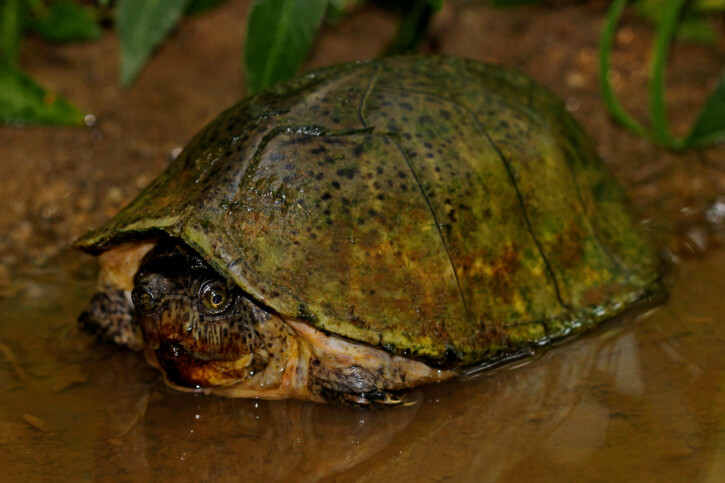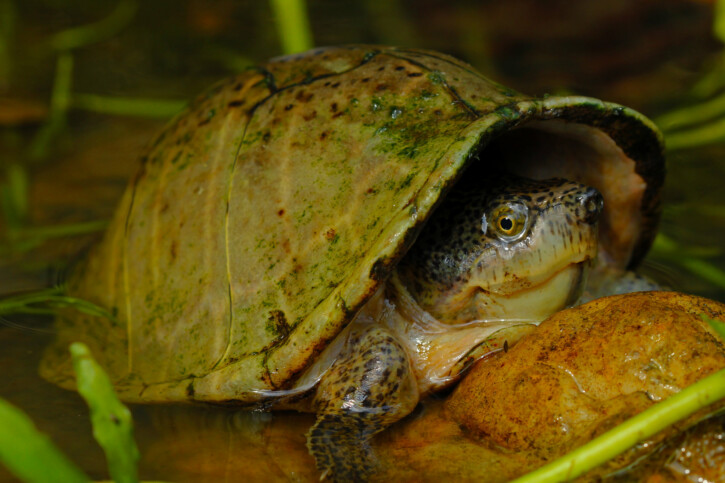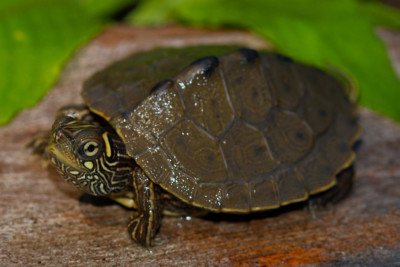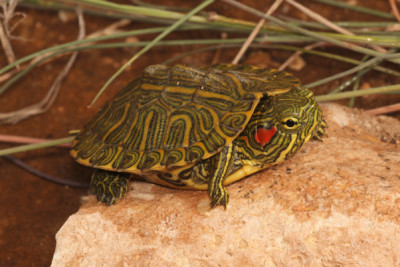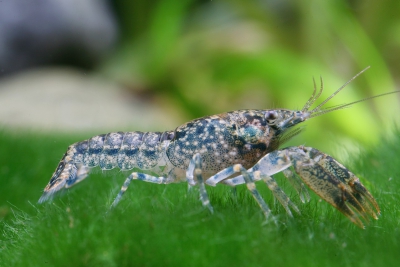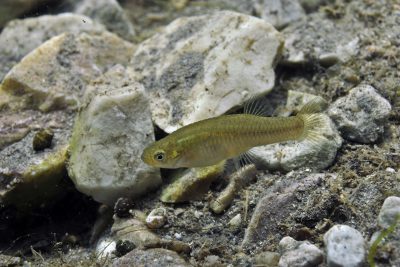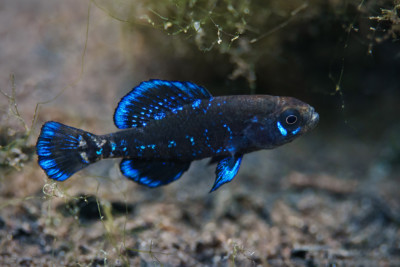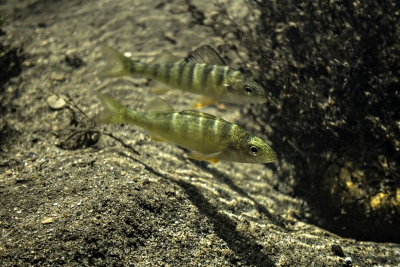razor-backed musk turtle
| Scientific name | Sternotherus carinatus |
|---|---|
| Descriptor | Gray |
| Year of description | 1856 |
| IUCN category (World) | LC |
| Family | Kinosternidae |
| Genus | Sternotherus |
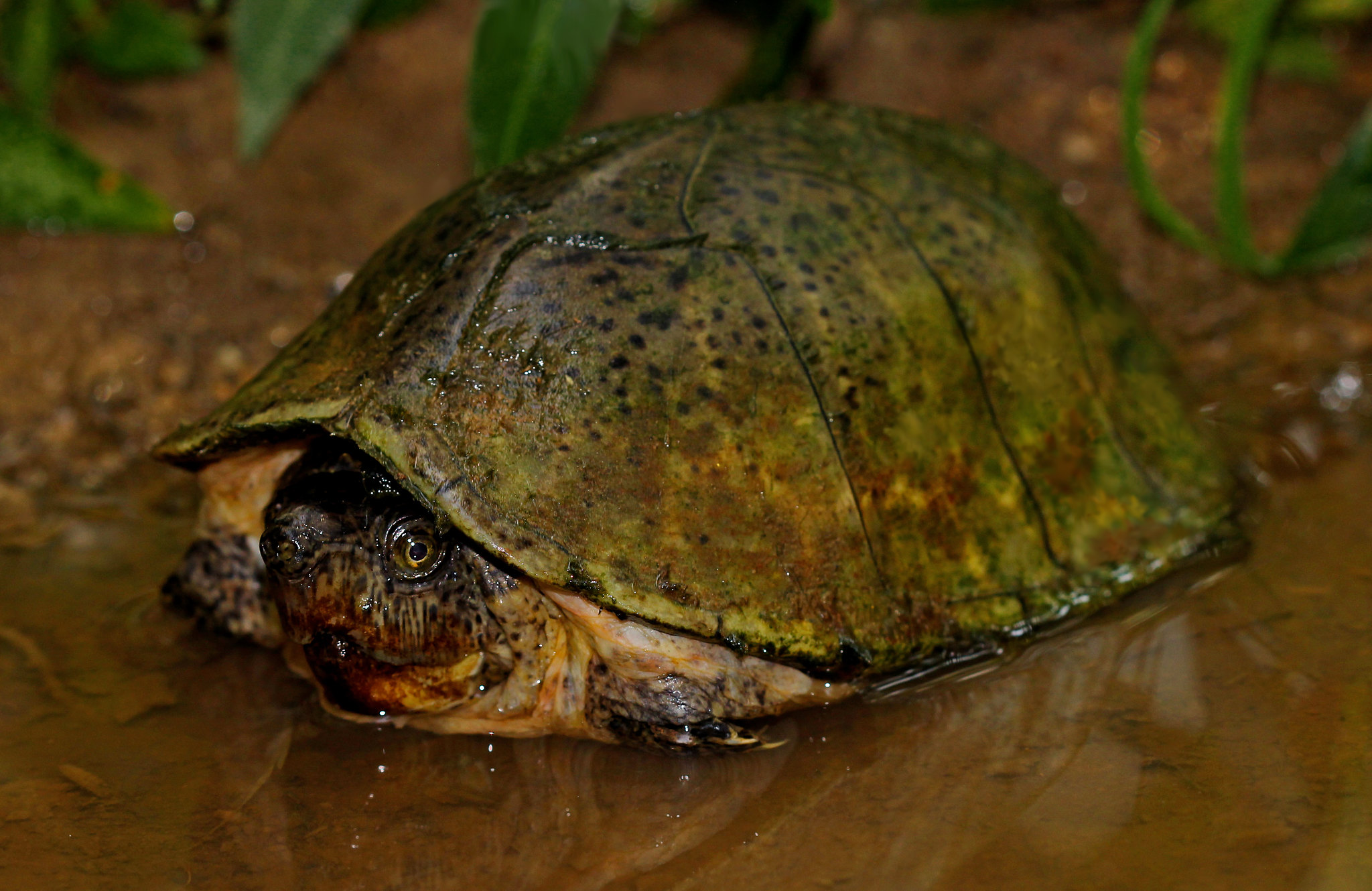

Introduction
Sternotherus carinatus, commonly known as razor-backed musk turtle, is a fresh water reptile from the North America.
This sheet is currently being prepared. The texts currently proposed come from our data model or are being drafted. To request priority for this content, you can write to us HERE.
Who is it?
Morphology
-
Type
-
Size10 - 12 cm
-
Longevity25 year
-
Type
-
Size10 - 12 cm
-
Longevity25 year
How to recognize This reptile ?
The razor-backed musk turtle measures between 10 and 12 cm.
Behaviour & Life cycle
-
SociabilityThe following information corresponds to the mode of sociability once sexual maturity has been reached.living in a group or alone
-
Way of livingdiurnalAn animal is said to be diurnal when it lives during the day.
-
VenomousNo
-
Dietnot specified
The razor-backed musk turtle is a reptile living in a group or alone naturally found mid-depth and near surface. This species is omnivorous with carnivorous tendency .
The razor-backed musk turtle is a territorial animal that does not tolerate any incursions into its living area. It is particularly virulent against other territorial species and it can provoke heated fights.
Reproduction
-
Reproductionovipare qui enfouit ses œufs
-
Clutch size1 - 7 eggs
The razor-backed musk turtle is a reptile ovipare qui enfouit ses œufs.
Harmless species
This species does not represent any particular threats to humans when encountered in its natural environment.
Origin and distribution
What is its habitat?
Natural environment characteristics
-
Temperature25 - 28 °C
-
pH (acidity)7 - 7.5
-
gh (hardness)5 - 19
-
FlowSlow and Stagnant
Biotope presentation
The razor-backed musk turtle is most often found at a depth between 0m and 2m. However, it is not impossible to find this species at other depths. This animal evolves in areas characterized by a strong presence of vegetation (aquatic and marsh plants, decaying organic matter, roots...).
This species lives near large roots, in which it can find refuge in case of danger. This type of habitat is often found not far from the banks.
Species of the same biotope
To go further
Sources & Contributions
Participation & Validation
The Fishipedia team and specialist contributors are committed to providing high-quality content. However, although the information comes from scientific sources or testimonials from specialists, the cards may contain inaccuracies.

Benoit Chartrer
Translation
Translation done with the valuable contribution of our translators, who make this information available to a wider audience. We sincerely thank them for their commitment.
Scientific partners
Tags
Species of the same biotope
